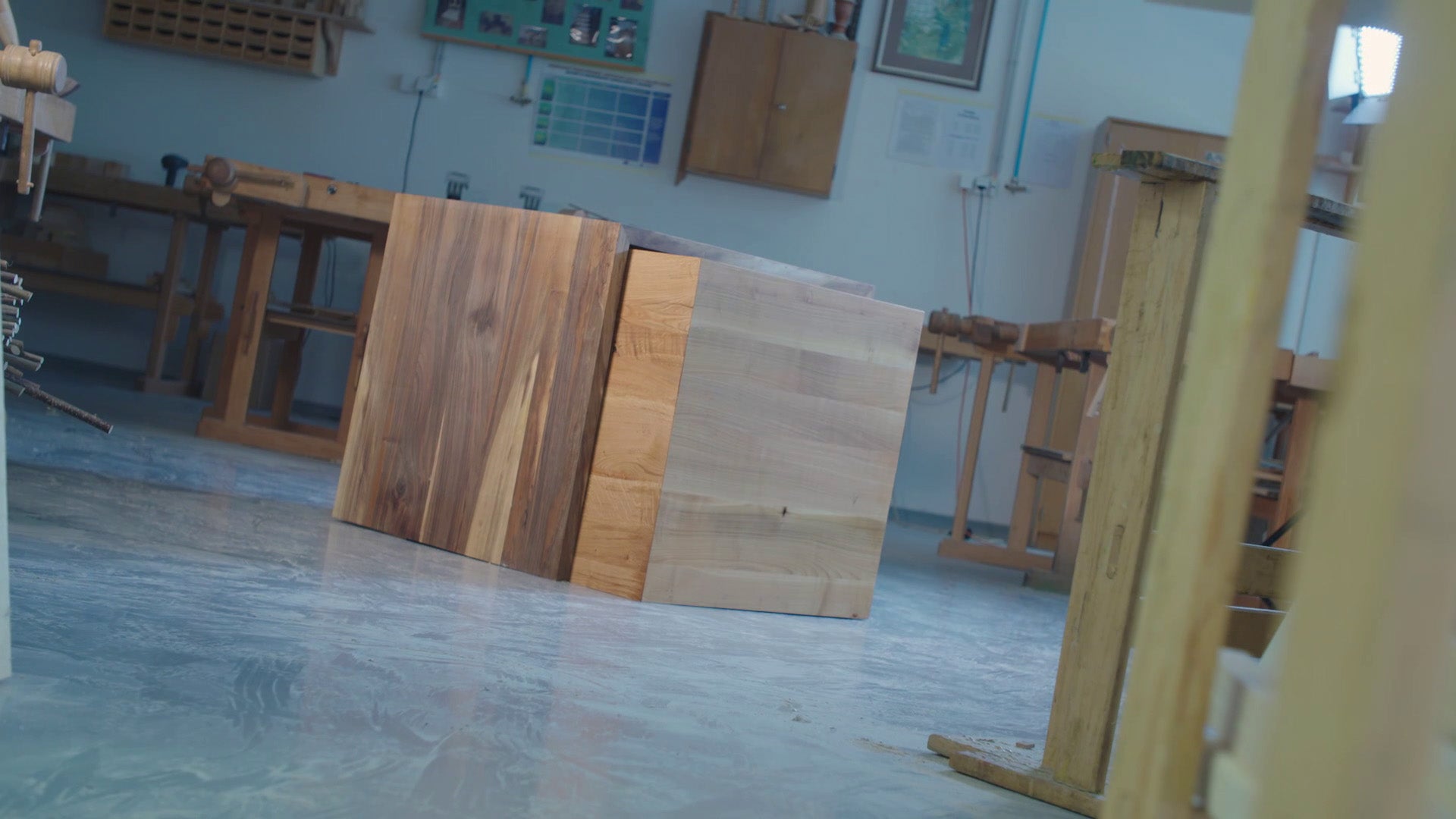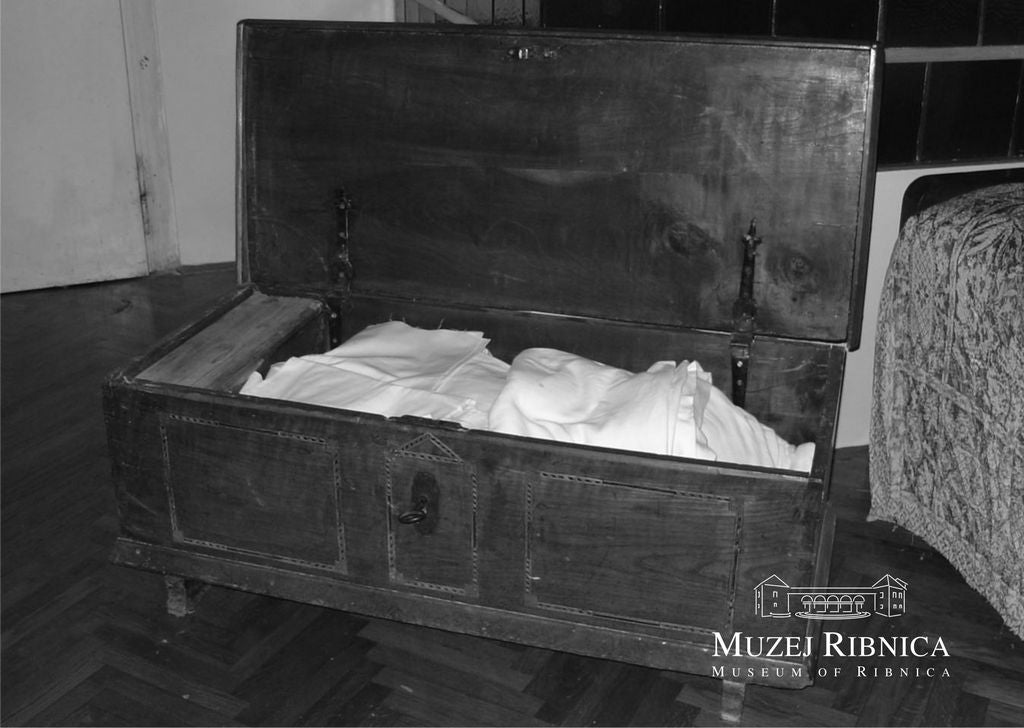WOODEN BOX
WOODEN CHESTS WERE ONE OF THE MOST IMPORTANT PIECES OF FURNITURE IN HOUSEHOLDS IN SLOVENIA UNTIL THE 20TH CENTURY. THEY WERE USED BY BOTH FARMERS AND TOWNSPEOPLE. THEY STORED CLOTHES, TOOLS, GRAIN, AND OTHER FIELD CROPS, AND SOME EVEN USED THEM FOR SITTING OR SLEEPING INSTEAD OF BEDS. SOME HAD COMPARTMENTALIZED INTERIORS WITH DRAWERS, AND OCCASIONALLY A HIDDEN COMPARTMENT FOR STORING VALUABLE ITEMS. THE FONT SHOULD REMAIN THE SAME.

Wooden chests were one of the most important pieces of furniture in households in Slovenia until the 20th century. They were used by both farmers and townspeople. They stored clothes, tools, grain, and other field crops, and some even used them for sitting or sleeping – instead of a bed. Smaller chests held small or valuable items such as sewing tools, documents, letters, and jewelry. They were made of wood, with only the hinges and lock being metal. Depending on their purpose and the wealth of the owner, chests could be made from softer spruce wood without elaborate surface treatment, or from harder woods such as cherry, walnut, or oak with more demanding surface treatment. They came in various sizes. Some had compartmentalized interiors with drawers, and occasionally a hidden compartment for storing valuable items. Usually, they were crafted by local rural artisans, who decorated them in accordance with the culture and traditions of the environment in which they were made.

There are two main types of chests distinguished by their use. Bridal chests, in which brides brought their dowry to their new home, were usually painted, carved, or inlaid. Unfortunately, there is no pictorial evidence of the decoration of bridal chests in the wider Kočevje area, but chests were an important part of the bride's dowry in Kočevje, reflecting her social status. As noted by Walter Tschinkel, it was considered an honor for a bride "if she could bring a chest full of clothes, a spinning wheel, a sickle, a water bucket, and a hoe." Such a bride was regarded as wealthy.
On the other hand, storage chests for field crops differed from bridal chests in their construction and were not adorned with decorative art. They were typically kept in a granary, but in smaller houses, they might be placed in the hallway or attic. The oldest grain chests were roughly hewn and had a roof-shaped lid, while younger ones had flat lids.
In the wider Kočevje area, mainly simple, undecorated chests (known as "Schrain" in Kočevje German dialect) have been preserved. However, Dr. Adolf Haufen, who researched these regions in the late 19th century, reports that clothes chests in peasant houses at that time were kept in the attic and decorated with simple paintings or carved patterns.
By the late 19th century, chests for goods began to be replaced by cabinets, sideboards, dressers, and other pieces of furniture across Europe. Grain chests, however, persisted for a longer time. Today, chests are primarily used as decorations symbolizing a connection to the past and tradition.
